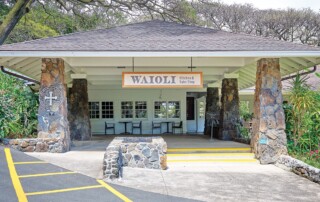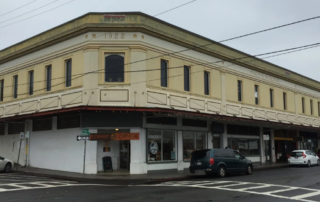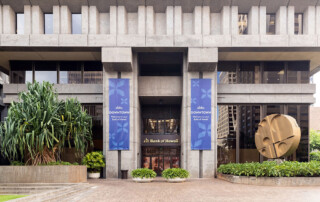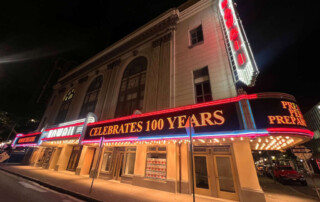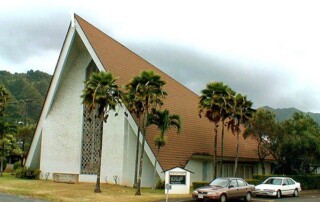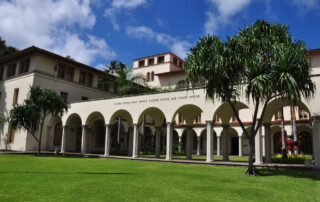Today, a living history museum on campus shows how the school has progressed from its humble beginnings. Konawaena High School, located on the slopes of Mauna Loa on Hawai‘i island, celebrated its centennial year in 2021. The name “Konawaena” means “the center of the leeward side.” The area, at the time, was described as having rocky soil, with large piles of pāhoehoe. The high school’s history traces to the Konawaena School, an elementary school established by H. S. Greenwell in the late 1800s next to the Central Kona Church. Its young students tried their hand at agriculture – growing daikon, beans and corn. In less than two decades, the school population grew to 300 pupils. Julian Yates, the county supervisor, and Bertha Ben Taylor, Supervising Principal of West Hawai‘i Schools, requested funding from the Territorial Legislature for the growing school. In 1921, the school was expanded to a nine-room school serving Grades 1-9 at its present location. Buildings included a new cafeteria and shop which were constructed with wood from the original school. Cooking, sewing, carpentry, shop, gardening, and later, homemaking were taught. Principal Clyde E. Crawford supported the school as it met many new milestones. One year later, Konawaena School joined the Big Island Football Federation and saw construction of a new gymnasium – the first on the island – “consisting of a roof, wooden floor, and lots of fresh air.” A Centennial Edition of the school newspaper summarized the celebratory events organized by the school and alumni. It was not until 1928 that the school recognized its official mascot and colors as we know them today. The Konawaena Wildcats charged their opponents energetically at a football game against St. [...]


